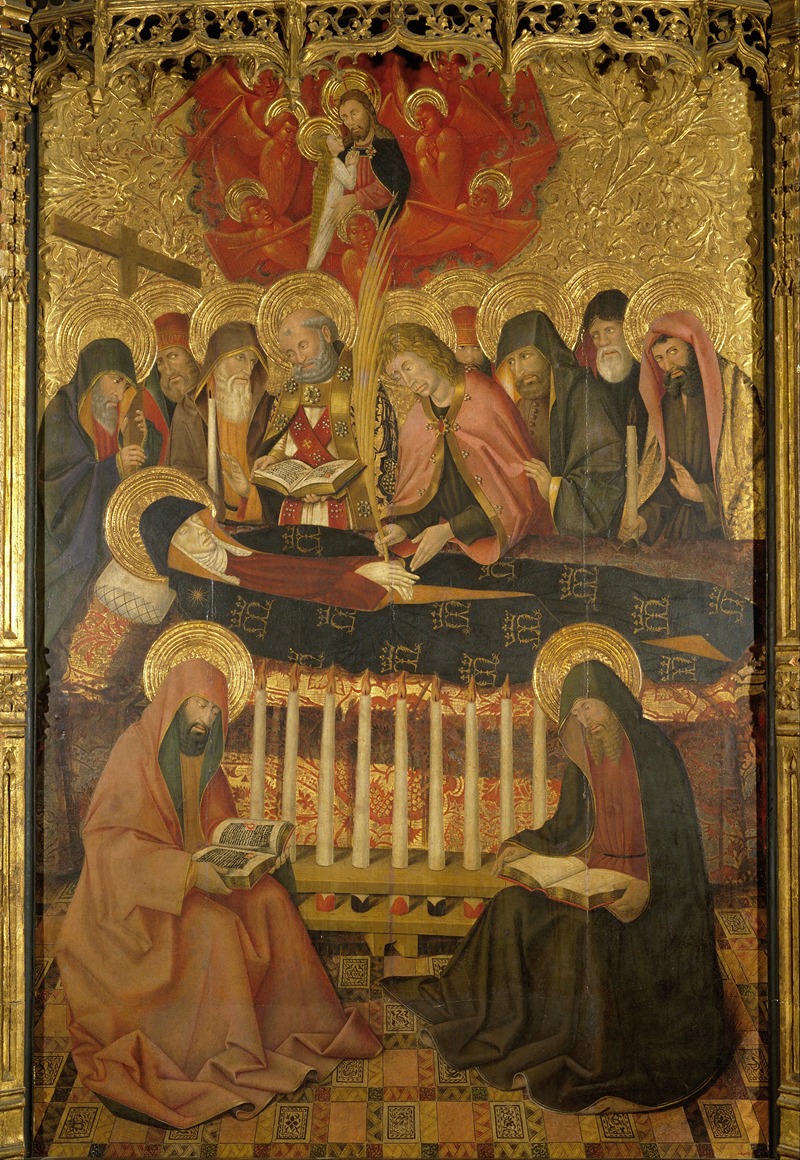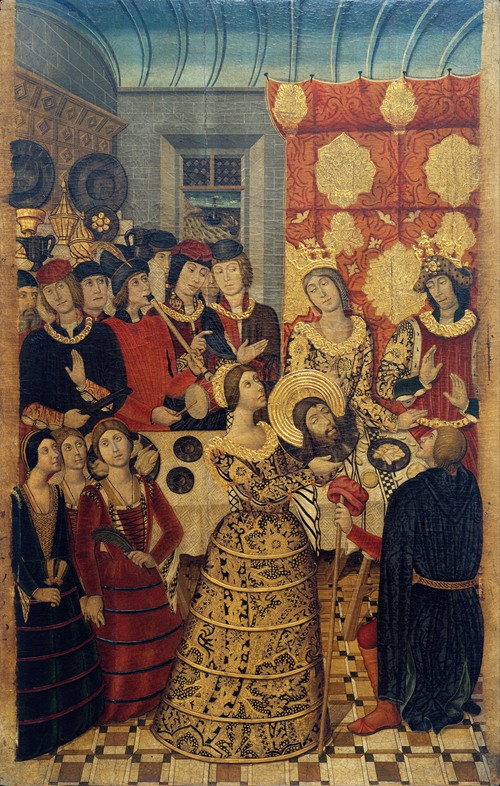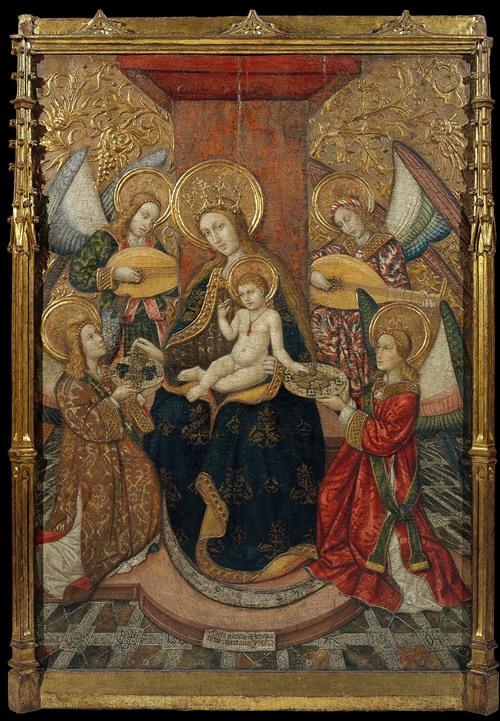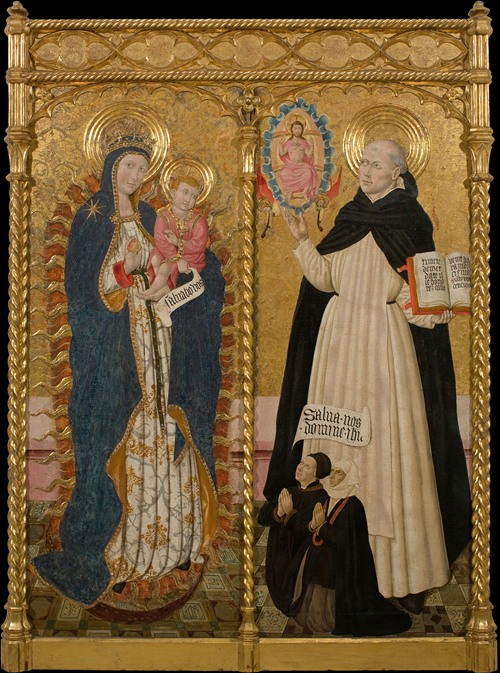
Pedro Garcia Benavarre, or Benabarre was a Spanish-Flemish Gothic painter active in Aragon and Catalonia.
A Pedro Garcia de Benabarre was documented in 1445 in Zaragoza in Blasco union Grañén painter, who could be his teacher and with whom he collaborated as an assistant between 1445 and 1447.1 This Zaragoza highlights the execution stage of the altarpiece of Villarroya of Campo.2 The two partners also worked painting altarpieces for the church of the monastery of San Pedro de Siresa in Jacetania.
In 1452 he wa sestablished in Benabarre and worked on his own. From there he moved to Barcelona in 1455, hired by the widow and son of Bernat Martorell, with whom he pledged to finalize left unfinished works by the master outside of Barcelona and take charge of the upcoming contracts within five years from on 1 January 1456. From this period are the altarpieces of St. Clare of Assisi and St. Catherine of Alexandria (1456, Barcelona Cathedral) and San Quirico and Santa Julita (Diocesan Museum of Barcelona).
It is likely that the terms of the contract signed with the Martorell are not met in full because in 1460 it is found again documented in Benabarre where he remained until 1469. From Benabarre worked for various nearby locations. At this stage, which are contracted numerous altarpieces, you may belong one of his most famous works: the Virgin enthroned and four angels or Virgen de Bellcaire, from the parish church of Bellcaire d'Urgell and preserved in the National Museum Art de Catalunya, with the handwritten signature "Pere García de Benavarri m'a pintat year ..."; the disappearance date has resulted in several proposals, but stylistically is towards 1470.3
Also in the years that passed between Benabarre and Lleida they belong the altarpiece dedicated to the Virgin and San Vicente Ferrer, painted for the Dominican monastery of Cervera, and the altarpiece of the now defunct church of San Juan del Mercado de Lleida, partially preserved in the Museu Nacional d'Art de Catalunya. 1470 he worked in the altarpiece of the convent the Dominicans had in Lleida, engaged in its restoration, to be destroyed in the Remença.
By 1481 he settled in Barbastro. For dated July 26 documents and the September 14, 1483 consists that claimed 1001 and 1500 salaries respectively by painting altarpiece of the church of the convent of San Francisco of this city, missing work for which yet in 1485 he caught 250 salaries.



